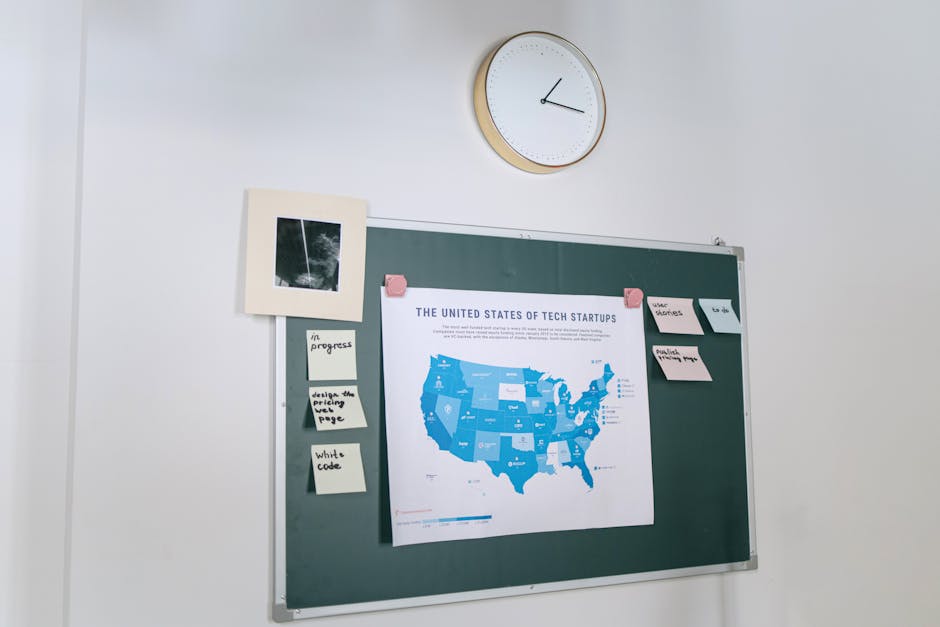Balancing Simplicity And Innovation: The Art Of The ‘Minimal Feature MVP’
Are you tyred of using complex and overwhelming products that are packed with unnecessary features? Imagine this scenario: you download a new productivity app, hoping it will help you stay organised and focussed. But instead, you find yourself overwhelmed by the multitude of buttons, options, and settings. Frustrated, you abandon the app and continue your search for something simpler.
This is where the concept of the ‘Minimal Feature MVP’ comes into play. The Minimal Feature MVP (Minimum Viable Product) is all about finding the perfect balance between simplicity and innovation in product development. It focuses on delivering a streamlined version of a product that addresses essential customer needs without overwhelming them with unnecessary complexity.
In this article, we will explore the art of creating a Minimal Feature MVP. We will delve into understanding customer needs and pain points, identifying crucial features for the MVP, streamlining user experience and interface design, leveraging agile development methodologies, gathering and analysing user feedback, as well as iterating and scaling the product. By mastering this art form, you can create products that not only meet customer expectations but also leave them delighted with their simplicity and effectiveness.
Key Takeaways
- Understanding customer needs and pain points is crucial for creating a successful minimal feature MVP.
- Empathy combined with market research helps identify common pain points and essential features for the MVP.
- Prioritising features that aline with product goals and provide value is crucial for meeting customer expectations.
- Gathering and analysing user feedback is crucial for continuously improving and refining the minimal feature MVP.
Understanding Customer Needs and Pain Points

Understanding customer needs and pain points is crucial for creating a successful product that customers will luv. By empathising with customers and conducting thorough market research, you can gain valuable insights into what your target audience truly desires.
Empathising with customers means putting yourself in their shoes and understanding the problems they face on a daily basis. This requires active listening and observing, as well as conducting surveys or interviews to gather direct feedback.
Market research plays a key role in understanding customer needs and pain points. It involves analysing industry trends, studying competitor products, and identifying gaps in the market that your product can fill. By thoroughly researching your target audience’s preferences, habits, and pain points, you can tailor your product to address their specific needs.
Empathy combined with market research allows you to identify common pain points shared by your target audience. These pain points could be anything from time-consuming tasks to inefficient processes or lack of certain features in existing products. By addressing these pain points through innovative solutions, you can create a minimum viable product (MVP) that captures the attention of your potential customers.
Transitioning into the next section about identifying essential features for the MVP, it’s important to note that understanding customer needs and pain points is just the first step towards creating a successful product. Once you have gathered this information, you need to prioritise and identify which features are essential for your MVP while balancing simplicity and innovation.
Identifying Essential Features for the MVP

To truly grasp the core components necessary for your MVP, take a moment to reflect on the essential features that will captivate your audience. Prioritising features is crucial in order to create a minimum viable product (MVP) that meets the needs and expectations of your target users.
It is important to identify the key functionalities that will deliver value and solve their pain points. One effective way to determine which features are essential is through user testing. By involving potential users early on in the development process, you can gather valuable insights and feedback. This allows you to understand what features resonate most with them and prioritise accordingly. User testing not only helps you identify must-have features but also helps uncover any potential issues or areas for improvement.
When prioritising features for your MVP, it’s essential to focus on those that aline with your product’s main goals and provide the most value to users. Consider which functionalities are critical for achieving your product vision and meeting customer needs.
Streamlining user experience and interface design should be a top priority when developing an MVP. Once you have identified the essential features, it’s important to ensure they are presented in an intuitive and user-friendly manner. A clean and easy-to-navigate interface enhances useability, making it more likely for users to engage with your product.
By identifying essential features through prioritisation techniques like user testing, you can create an MVP that addresses customer pain points while delivering value. Streamlining the user experience and interface design further enhances its appeal.
Transitioning into the next section about ‘streamlining user experience’ sets us up for exploring how simplicity plays a crucial role in creating a successful MVP without explicitly stating ‘step.’
Streamlining User Experience and Interface Design

Enhancing user experience and interface design is crucial in creating an engaging and intuitive product. Improving useability and optimising navigation are key aspects to consider when streamlining the user experience.
To improve useability, one must focus on designing a straightforward and intuitive interface. The goal is to make it easy for users to understand how to navigate through the product without any confusion or frustration. This can be achieved by using clear labels, logical organisation of elements, and providing helpful feedback throughout the user’s journey. By simplifying the interface, users can quickly find what they need and complete tasks efficiently.
Optimising navigation is another important aspect of streamlining the user experience. Users should be able to easily navigate between different sections or features of the product without getting lost or overwhelmed. This can be accomplished by implementing a clear menu structure, using breadcrumbs for easy backtracking, and providing search functionality for quick access to specific content.
In addition to improving useability and optimising navigation, it’s essential to consider visual design elements that enhance the overall user experience. Using consistent branding, attractive colour schemes, appropriate typography, and visually appealing graphics can create a visually pleasing interface that engages users.
By focussing on enhancing user experience and interface design through improved useability and optimised navigation, you can create a product that users will find intuitive and enjoyable to use. This sets a solid foundation for further development iterations in leveraging agile development methodologies…
Leveraging Agile Development Methodologies

By embracing agile development methodologies, you can ride the wave of progress, adapting and evolving your product with the flexibility of a chameleon. Agile methodology is based on the principles of continuous improvement and cross-functional teams, allowing for more efficient and effective development processes.
One key aspect of agile development is its focus on continuous improvement. With each iteration or sprint, teams have the opportunity to reflect on their work and make necessary adjustments. This iterative approach allows for regular feedback and course correction, ensuring that the final product meets user needs and expectations.
Agile also emphasises the importance of cross-functional teams. Instead of working in silos, different roles collaborate closely throughout the development process. Developers, designers, testers, and other stakeholders actively participate in planning sessions, daily stand-ups, and retrospectives. This collaboration leads to better decision-making and problem-solving since diverse perspectives are taken into account.
Benefits of Agile Development Methodologies:
- Faster time-to-market: By breaking down work into smaller iterations or sprints, features can be delivered incrementally.
- Higher customer satisfaction: The continuous feedback loop ensures that the product alines with user expectations.
Agile development methodologies provide a framework for balancing simplicity and innovation by enabling continuous improvement through iterative cycles and fostering collaboration within cross-functional teams.
As you gather valuable insights from user feedback in order to refine your minimal feature MVP (Minimum Viable Product), it’s important to consider how these insights can shape future iterations.
Gathering and Analysing User Feedback

Immerse yourself in the valuable insights gained from user feedback to truly understand their needs and desires, allowing you to create a product that resonates deeply with your audience. Gathering and analysing user feedback is a crucial step in improving user engagement and addressing their concerns.
To effectively gather and analyse user feedback, it is important to have a systematic approach. One way to do this is by using surveys or questionnaires, where users can provide their opinions and suggestions about the product. Additionally, conducting interviews or focus groups can provide more in-depth insights into the users’ experiences and preferences.
Once you have collected the feedback, it is essential to analyse it carefully. Look for common patterns or trends that emerge from the responses. Identify any recurring themes or issues that users are facing, as this will help prioritise areas of improvement. By addressing these concerns directly, you can enhance the overall user experience.
Incorporating a 2 column and 3 row table:
| Feedback Theme | User Concerns Addressed |
|---|---|
| Navigation | Confusing menu structure |
| Performance | Slow loading times |
| Design | Cluttered interface |
By understanding what aspects of your product resonate positively with users and what areas need improvement, you can iterate and scale your product effectively. In the next section on ‘iterating and scaling the product,’ we will explore how to incorporate these insights into refining your minimal feature MVP without losing sight of simplicity and innovation.
Iterating and Scaling the Product

Now that you’ve gathered and analysed user feedback, it’s time to move on to the next phase of product development: iterating and scaling the product.
This is where you take the valuable insights gained from user feedback and make iterative improvements to your minimal feature MVP. Like a sculptor refining their masterpiece, you will carefully consider each piece of feedback and determine how it can be applied to enhance your product. Whether it’s streamlining a user interface or adding new features based on popular requests, every iteration brings you closer to creating a truly innovative solution.
Just as a plant needs nurturing to grow, scaling the product requires addressing scalability challenges. As more users come on board, you need to ensure that your infrastructure can handle increased traffic and usage. This may involve optimising code, expanding server capacity, or implementing caching mechanisms for faster response times.
Similar to building blocks coming together, each iteration builds upon the previous one, gradually transforming your minimal feature MVP into a robust and scalable product. The key is to strike a balance between simplicity and innovation at each stage, ensuring that new features are integrated seamlessly without overwhelming users with complexity.
By following an iterative approach and addressing scalability challenges head-on, you can continuously improve your product while keeping pace with growing demand. Remember that this process isn’t linear but rather cyclical – as you gather more feedback from users and identify new opportunities for improvement, the cycle begins anew. So embrace these challenges as opportunities for growth and keep refining your minimal feature MVP until it becomes an indispensable solution in the market.
Frequently Asked Questions
How can understanding customer needs and pain points help in developing a minimal feature MVP?
Understanding customer needs and pain points is crucial for developing a minimal feature MVP. By adopting a customer-centric approach and conducting thorough pain point analysis, you can create a solution that directly addresses their challenges and provides maximum value.
What factors should be considered when identifying essential features for the MVP?
When identifying essential features for the MVP, factors such as customer needs and pain points, market research, technical feasibility, and potential impact on user experience should be considered. These factors help ensure a focussed and effective MVP.
How can user experience and interface design be streamlined in the development of a minimal feature MVP?
To streamline user experience and interface design in developing a minimal feature MVP, you can optimise the design through a user-centric approach. By prioritising useability and simplicity, you ensure an engaging and intuitive product.
How does leveraging agile development methodologies contribute to the creation of a minimal feature MVP?
Leveraging agile development methodologies involves an iterative approach to creating a minimal feature MVP. This includes MVP testing, analysing user feedback, and continuously improving the product based on the insights gained.
What steps should be taken in gathering and analysing user feedback for a minimal feature MVP?
To gather user feedback for a minimal feature MVP, you should conduct surveys, interviews, and useability tests. Analyse the feedback by identifying common patterns and themes. For example, in a case study, gathering feedback from beta testers helped refine the product’s core functionality.
Conclusion
In conclusion, balancing simplicity and innovation is crucial when developing a minimal feature MVP.
By understanding customer needs and pain points, identifying essential features, streamlining user experience, leveraging agile development methodologies, and gathering user feedback, you can create a product that meets the demands of your target audience.
Interestingly, studies have shown that 70% of start-ups fail due to building products with unnecessary features. Therefore, focussing on creating a minimal feature MVP can significantly increase the chances of success for your product.
Contact us to discuss our services now!
